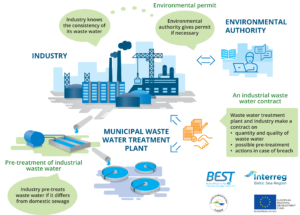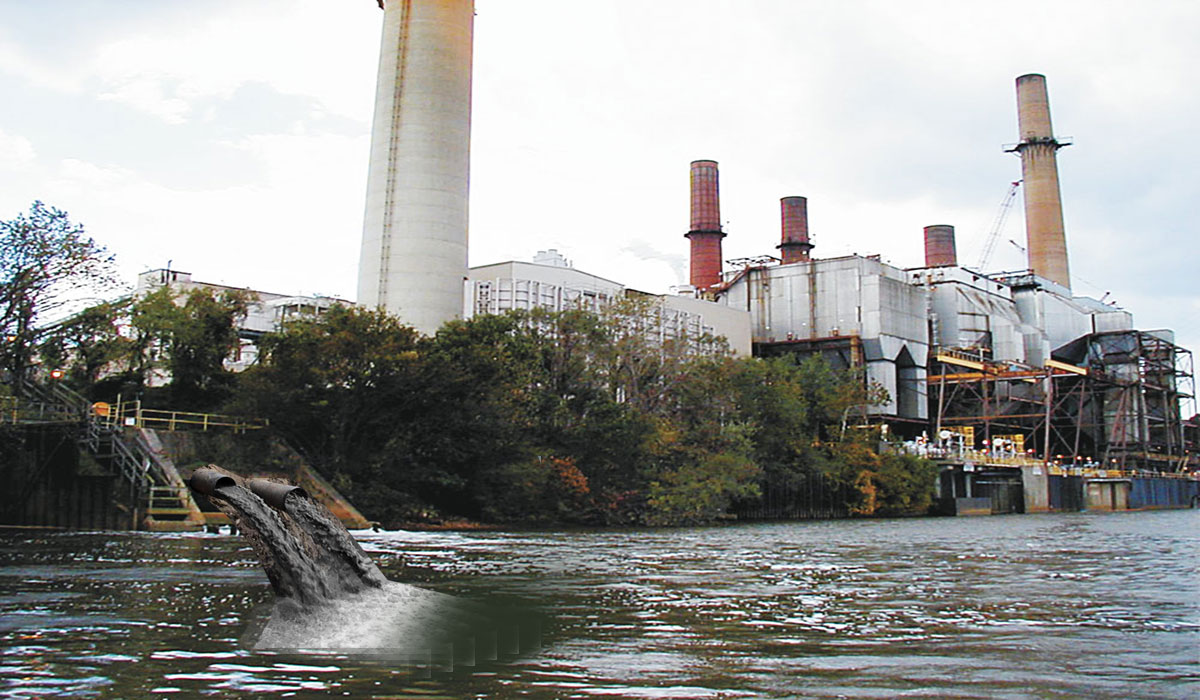Industrial Waste Water Treatment-- Cutting-Edge Technologies for Water Filtration
Wiki Article
Secret Methods in Hazardous Waste Water Therapy Procedures
The therapy of commercial wastewater is a crucial aspect of ecological administration, including an array of techniques made to reduce the impact of contaminants. Advancements in technologies such as membrane layer filtering and advanced oxidation processes supply cutting-edge options for boosting therapy efficiency.Physical Treatment Approaches
How efficiently can physical treatment methods deal with the complexities of commercial wastewater? Physical treatment techniques play a critical duty in the preliminary phases of wastewater monitoring, focusing mostly on the removal of solids and large particulates. Strategies such as filtration, sedimentation, and flotation protection are crucial for minimizing the concentration of suspended solids, thus enhancing the performance of subsequent treatment processes.Sedimentation includes the gravitational settling of solids, permitting the splitting up of heavier materials from the wastewater. This method is especially reliable in making clear water before organic or chemical treatments. Filtering, on the other hand, utilizes various media to catch particle issue, ensuring that smaller sized contaminants are removed. This technique can be tailored to accommodate various kinds of commercial effluents, creating more clear effluent streams.
Furthermore, flotation approaches, which use air bubbles to raise suspended solids to the surface area for elimination, are reliable in dealing with wastewater with high concentrations of fats, oils, and greases. Overall, physical therapy approaches serve as an important first action in the comprehensive monitoring of industrial wastewater, ensuring that the tons on succeeding treatment stages is lessened and boosting total therapy effectiveness.
Chemical Treatment Techniques
While physical treatment methods lay the foundation for efficient wastewater management, chemical treatment methods are important for resolving the much more intricate contaminants usually found in commercial effluents. These techniques make use of various chemical representatives to speed up, counteract, or oxidize hazardous substances, making sure an extra comprehensive removal of contaminants.
One typical technique is coagulation and flocculation, where chemical coagulants such as aluminum sulfate or ferric chloride are contributed to promote the aggregation of put on hold particles. This procedure improves solid-liquid separation, minimizing turbidity and boosting water high quality. In addition, neutralization processes are employed to change the pH of wastewater, using acids or bases to reduce the effects of acidic or alkaline streams, specifically.
Oxidation-reduction responses play a critical role in degrading natural contaminants and microorganisms. Chemical oxidants like hydrogen, chlorine, or ozone peroxide are utilized to damage down intricate organic substances, making them much less hazardous or extra eco-friendly. In addition, progressed oxidation processes (AOPs) combine multiple oxidation strategies to enhance toxin elimination efficiency.
Organic Therapy Procedures
The performance of wastewater therapy is substantially boosted by biological therapy processes, which harness the all-natural metabolic activities of microorganisms to decompose raw material and eliminate pollutants. Industrial Waste Water Treatment. These processes primarily include cardio and anaerobic food digestion, each tailored for details types of wastewaterAerobic treatment procedures make use of oxygen to sustain microbial development, advertising the failure of organic pollutants into carbon dioxide and water. Usual techniques consist of activated sludge systems, where aeration containers facilitate the mixing of wastewater with bacteria, and dripping filters, which motivate biofilm growth on media surface areas.
On the other hand, anaerobic therapy processes occur in the lack of oxygen, using anaerobic microorganisms to decompose raw material, resulting in biogas manufacturing, an eco-friendly energy resource. Anaerobic digesters are usually utilized in industrial setups for this function, effectively decreasing the volume of sludge while producing valuable biogas.
The selection of an organic therapy approach depends on wastewater features, treatment objectives, and regulatory criteria. The assimilation of biological processes in wastewater therapy not only enhances toxin elimination effectiveness yet likewise promotes sustainability by lessening chemical use and supporting resource healing.
Advanced Oxidation Processes

Usual AOP techniques include Fenton's photocatalysis, ozonation, and reagent. Fenton's reagent, a combination of hydrogen peroxide and ferrous iron, militarizes the development of hydroxyl radicals, making it reliable for dealing with wastewater having phenolic substances and various other recalcitrant compounds.
AOPs use numerous benefits, including minimized sludge production and the ability to deal with wastewater with high focus of natural pollutants. Nonetheless, the execution of AOPs needs mindful factor to consider of functional specifications and cost-effectiveness, ensuring that these sophisticated strategies are properly incorporated into existing wastewater therapy this content systems.
Membrane Filtration Technologies

Microfiltration works for getting rid of put on hold microorganisms and solids, while ultrafiltration targets smaller natural molecules and viruses. Nanofiltration bridges the void in between ultrafiltration and reverse osmosis, successfully getting rid of natural compounds and divalent ions. Reverse osmosis gives the highest degree of purification, made use of mostly for desalination and removing mono-valent ions.
Membrane layer innovations use numerous advantages, including reduced power usage compared to conventional therapy methods, modular design for scalability, and the potential for water healing and reuse. However, challenges such as membrane fouling and the need for normal upkeep have to be resolved to ensure system efficiency. Generally, membrane layer purification innovations stand for a crucial element of contemporary commercial wastewater therapy strategies, promoting sustainability and resource conservation in water management.
Final Thought
In verdict, industrial wastewater treatment utilizes a diverse range of strategies, consisting of physical, chemical, organic, and progressed methods. Each approach plays an essential function in successfully dealing with various pollutants, enhancing water high quality, and promoting source sustainability. The combination of these strategies cultivates a More Bonuses comprehensive treatment technique, guaranteeing that industrial effluents fulfill regulatory criteria while minimizing ecological effect. Continued advancements in these methodologies will even more boost the effectiveness and performance of wastewater treatment procedures in industrial settings.The therapy of commercial wastewater is a vital aspect of environmental monitoring, entailing a variety of strategies created to mitigate the impact of pollutants.Just how successfully can physical therapy methods deal with the complexities of commercial wastewater?Advanced oxidation processes (AOPs) stand for an innovative method in commercial wastewater therapy, designed to effectively degrade organic toxins that are commonly resistant to standard therapy methods (Industrial Waste Water Treatment).In verdict, industrial wastewater therapy employs a diverse range of strategies, including physical, chemical, organic, and progressed methods. Proceeded improvements in these methods will certainly better enhance the efficiency and effectiveness visit their website of wastewater therapy processes in commercial settings
Report this wiki page